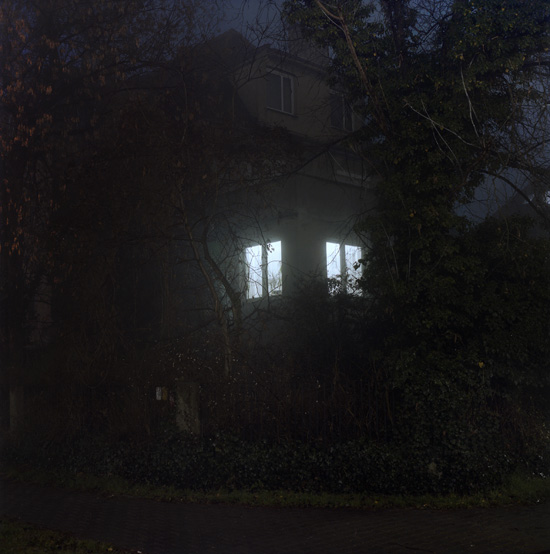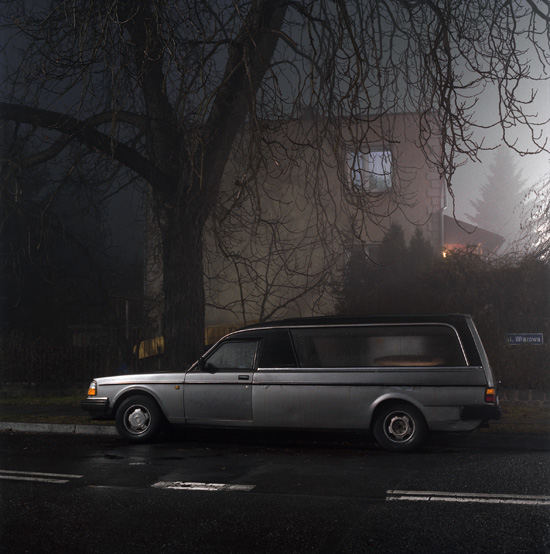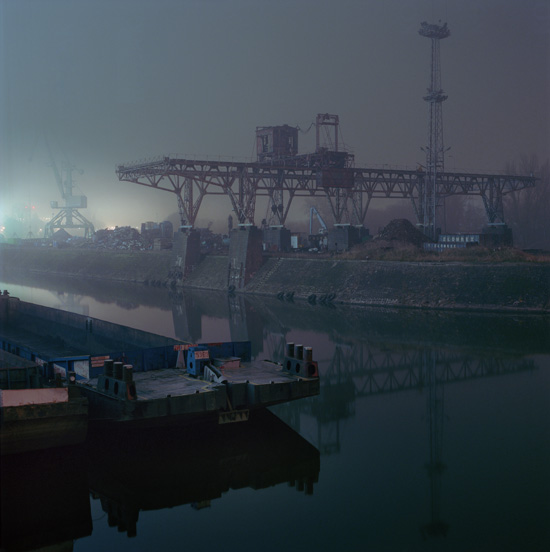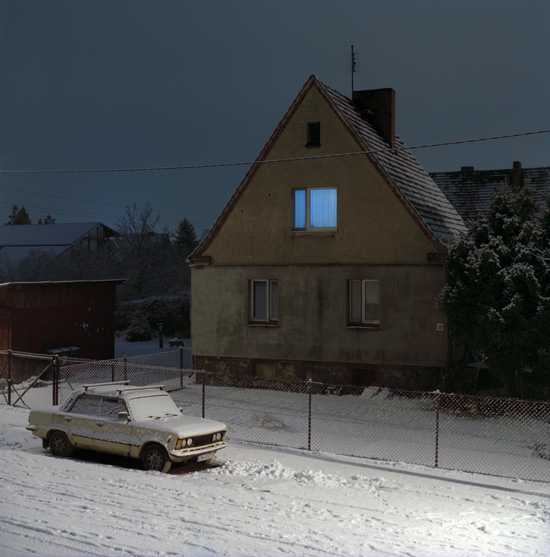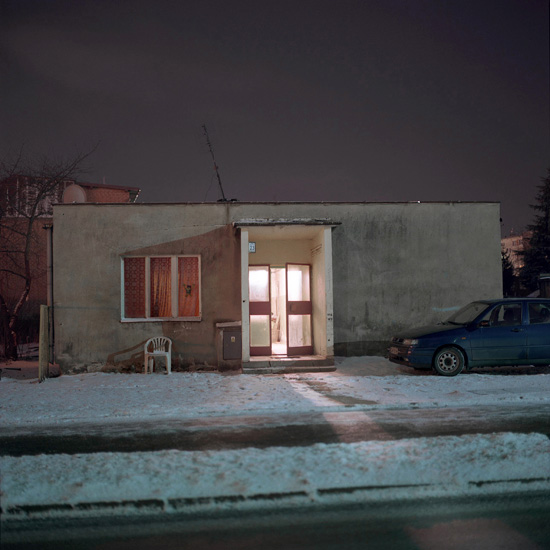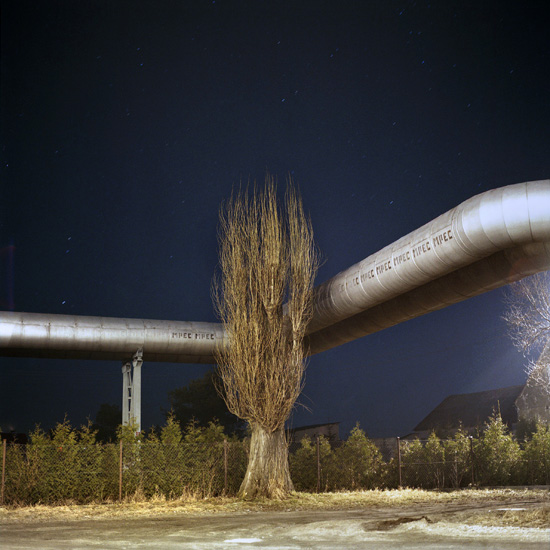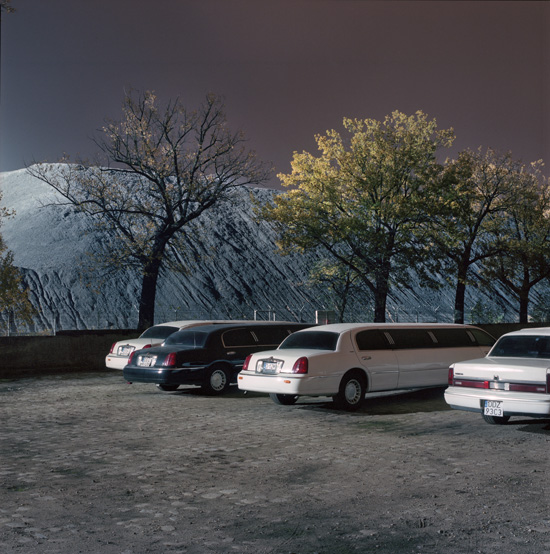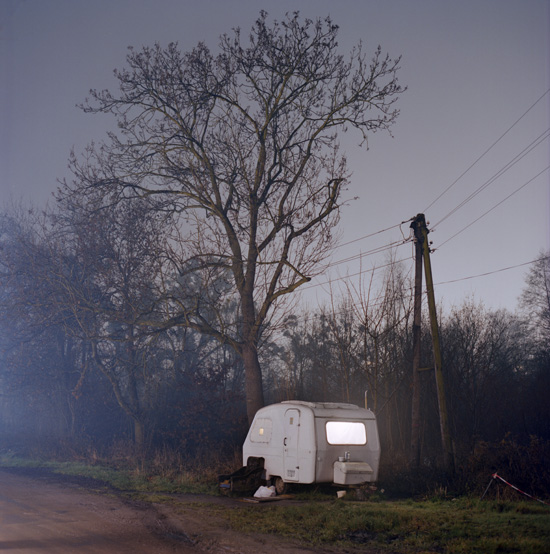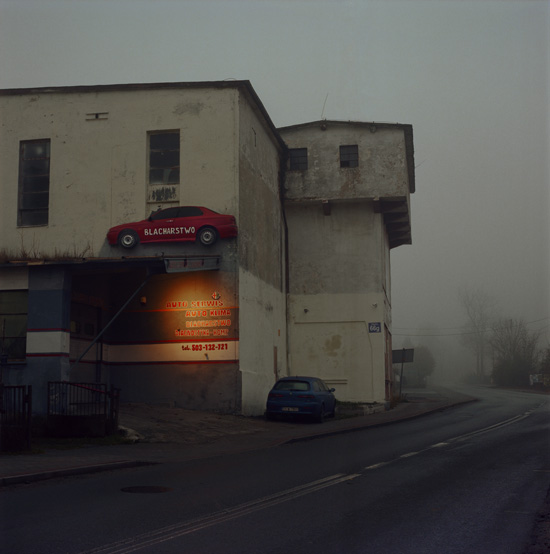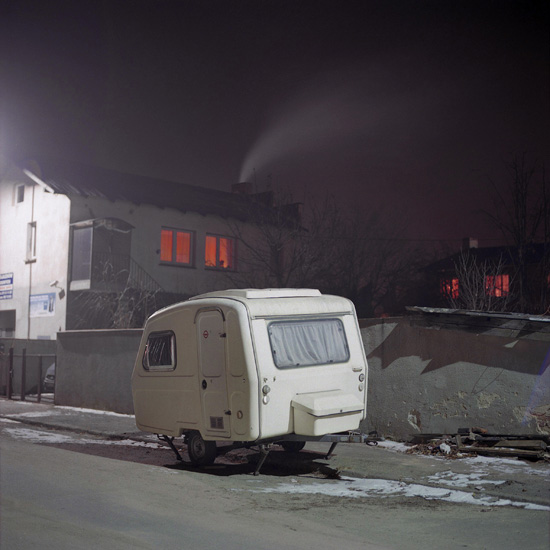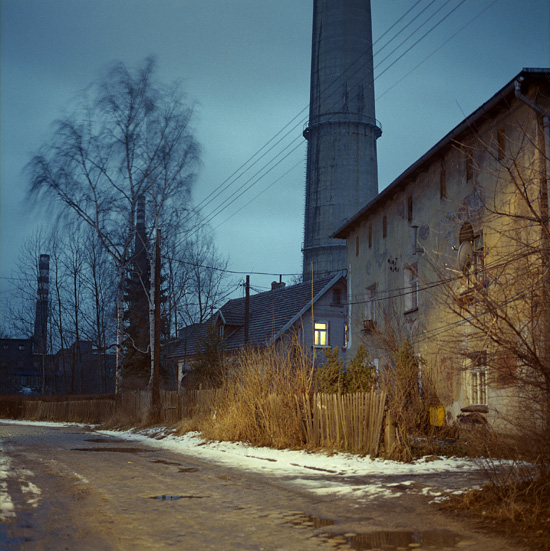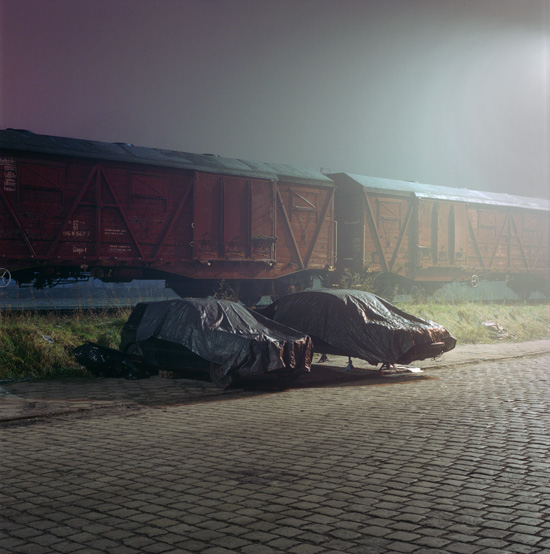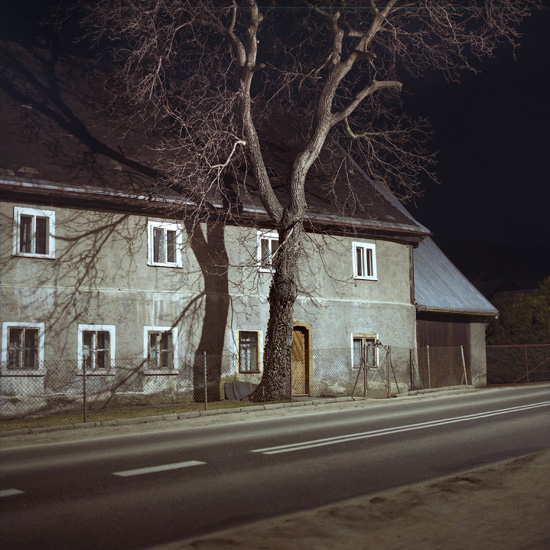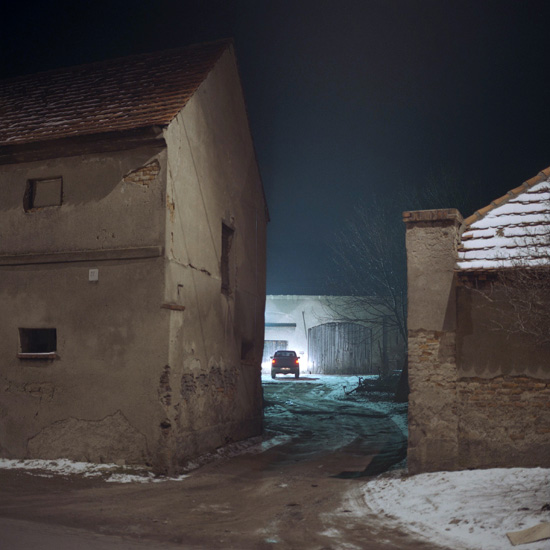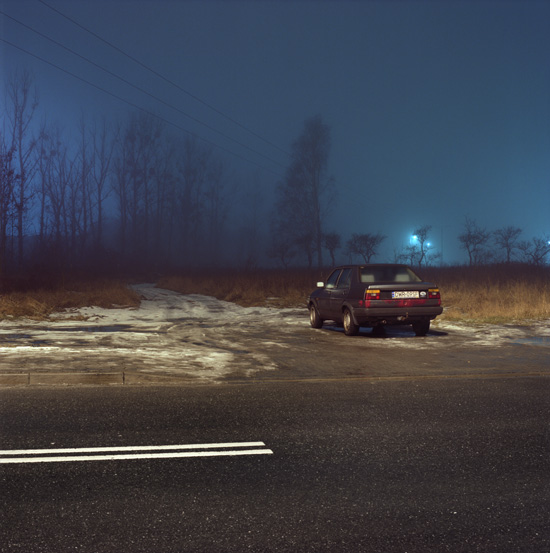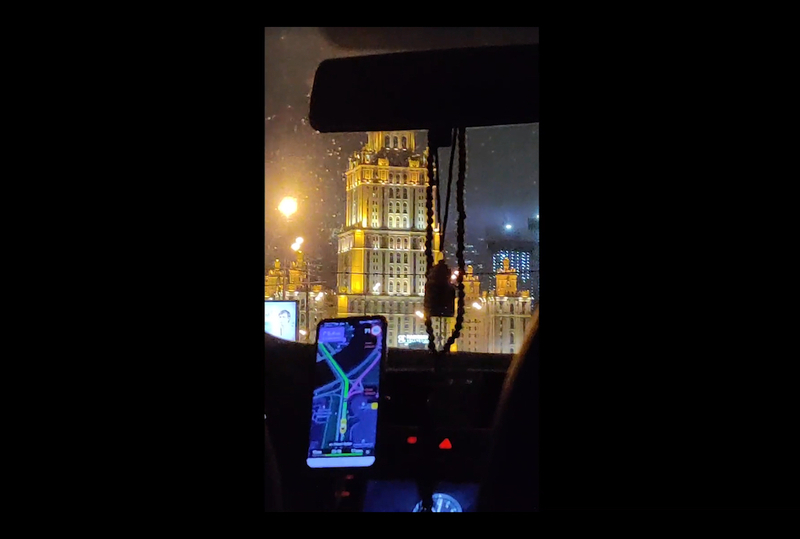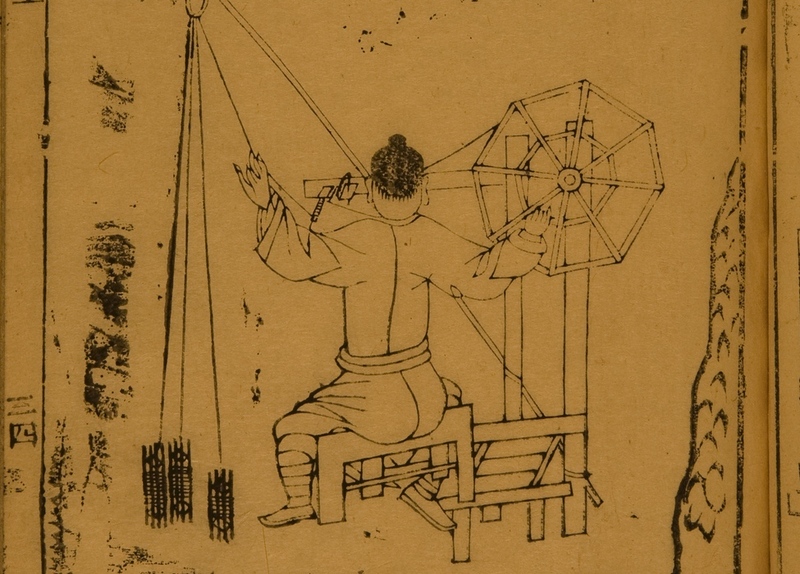Did aliens visit Poland? How good was Victor Hugo at geopolitics? Why did the Irish locate the moon in Eastern Europe? What brought together Poles and Haitians? Through childhood memories, lesser known histories, mythological conspiracies, and theoretical physics, Bogna Konior explores the complex entanglement of dreams and actualities that makes up a nation.
As with all good things in life, Y2K in Wałbrzych, Poland, was rough but transcendent. The prophecy of the cybernetic apocalypse did not come true but someone must have initiated a glitched program because you could almost see how reality was barely stitched at the seams. History peeked at us from behind the illusory veil of linear time. Children could see it best. I used to think that if something looked strange when you’re ten, it must be really unusual because everything's strange when you’re ten. Now I know that growing up means that everything looks stranger and stranger with each passing day. How can you tell that odd things are happening? It’s easy. A sensation of fullness hangs in the air, a tingling heaviness. Borders around our thoughts soften or harden, but either way are brought into focus: what was familiar gives off a supernatural whiff, and what used to be uncanny becomes the most usual thing in the world. “There are more things in heaven and Earth, Horatio…” and some of them are in Poland.
At the turn of the millennium, gossip grim as a plague spread around my town, of a serial killer hunting for young women. One corpse was supposedly found with larvae in her eye sockets near my primary school. Parents panicked and made us take taxis everywhere. The once lively summer streets became empty, wide, hollow. Our days brimmed with the “end of the road” scenario, “that’s it for you, bye.” (Then we found out the story was made up by taxi drivers as a money-making scheme.) At the turn of the millennium, a small religious cult in my town climbed its tallest mountain, waiting to be abducted by aliens. No one has seen them since, or so the legend goes. Then lightning struck a tree near the Książ castle in Szczawno Zdrój, a tiny neighboring city-resort clustered around miraculous mineral springs that reportedly healed many ailments and hosted notable intellectuals in the 19th century. For as long as I could remember, every few years the press would report on this or that “madman” who wanted to find Hitler’s hidden gold supposedly buried under the castle, somewhere in the vast Nazi underground tunnels. At the turn of the millennium, the multiverse was flickering behind our eyelids and the end of the world was twitching in our muscles.
There is a theorya theorySee, among many others, Michael Hanlon, “The Golden Quarter,” Aeon, 3 Dec, 2014, or Tom Simonite, “Technology Stalled in 1970,” MIT Technology Review, 18 Sept, 2018. that technological and scientific progress stalled after the 1970s. Maybe that’s why there were so many UFOs around that time. If you look closely, there is another history behind known history, a world of which we are the inverted mirror image, unaware of how distorted we look. Poland has been outside of authorized time for a few centuries. The 1896 play by Alfred Jerry, seen by some as the beginning of modernism, is set in "Poland, which is to say nowhere," referencing the factual inexistence of Poland on the map of Europe between the Partitions and the end of the First World War (1772-1918). Poland was the Schrödinger's cat of Europe: there, but not there; alive, but dead. Poland disappeared from the map just as the official axis of modern history was forming in the West; consequently, the last few centuries of colonialism that forcibly united the whole world cannot be the interpretative key to Poland. Its spectral presence in the official timeline stands in sharp contrast to the remarkremarkVictor Hugo, Les Miserables, Vol. III, Electronic Text Centre, University of Virginia Library, 88.
of eminent novelist Victor Hugo that “all contemporary social crimes have their origin in the partition of Poland. The partition of Poland is the theorem of which all present political outrages are the corollaries.” Indeed, the disappearance of Poland was a hot topic for the budding political philosophy of the Enlightenment: every serious intellectual, politician, and revolutionary had an opinion about it. To many, including the Russian liberal Slavophile elites in Paris, the Partitions were a revolutionary act: an intervention into a disgraceful state of affairs in a savage nation, in order to make space for enlightened ideas of a truly progressive, modern civilization. Others considered it as quite the opposite. Karl Marx saw the liberation of Poland from under the Partitions as crucial to the global revolutionary goal of overthrowing “military despots,” a profoundly ironic statement given the subsequent partition of Polandthe subsequent partition of PolandMikołaj Gliński, “When Poland Was Nowhere: Foreigners Reflect on the Partitions & Stateless Nation,” Culture.Pl, Aug 3, 2017.
again in the twentieth century between Nazi Germany and the Soviet Union.
Unlike the colonies, where societies were also forcibly civilized and underwent the industrial revolution while under occupation by foreign empires, Poland seemed to Westerners both other and familiar. It was the uncanny of Europe, the East of the West, and the West of the East. Poland was like the uncomfortable feeling of someone else having been to your home while you were away. Something's not quite right. The Polish sense of separateness from Europe, which prevails to this day, only enforced this. Between the sixteenth and eighteenth centuries, one of the key mythologies of Eurasia was propagated by the Polish nobility—that noble Poles originated in the lost land of Sarmatia. The Sarmatians were an Iranian tribe that flourished between the fifth century BC to the fourth century AD. Originating in the Eurasian steppe that has long connected Central and Eastern Europe to Asia, they eventually migrated westwards and were assimilated by the Proto-Slavic populations of Eastern Europe. Tales of the ancient Iranian kingdom of Sarmatia that supposedly gave birth to the Polish nobility centuries before the three empires partitioned their country gave legitimacy to the image of Poland as the “strange and savage East.” Exotic legends, outrageous oriental fashion, and fantastic customs made Poles seem alien all the while they belonged geographically to “Europe.” To cope with this uncanny sensation, in the eighteenth century the Sarmatians were racialized just like the colonized population: Saxon porcelain manufacturers in Meissen produced exotic collectible figurines of Poles, Africans, Tatars, and monkeysand monkeysAgata Araszkiewicz, “The Sarmatian Phantom” in: Slavs and Tatars, Friendship of Nations: Polish Shi’ite Showbiz. Book Works, 2017, 25-43.. Nevertheless, blusterous as usual, the Polish aristocracy embraced this oriental image of themselves to justify their superiority over the Polish peasantry, which they perceived as being of a different ethnicity.
The great Polish literary critic Maria Janion labeledlabeledMaria Janion, Projekt Krytyki Fantazmatycznej: Szkice o Egzystencjach Ludzi i Duchów. Warszawa: PEN, 1991. Polish culture “phantasmatic”: steeped in a collective fantasy so intense that it competes with material reality. This sense of otherness within Europe, to the point that Poles were considered a different ethnicity, found its way into modern times. In the twentieth century, one of the undeservedly forgotten Polish artists, the sculptor Stanisław Szukalski, believed that all of humanity was stuck in a post-Deluge battle between humans and the descendants of Yeti, and that the primordial language of the world and of all humanity was macimowa, “a rootless, pre- and post-dividual language presently know as Polish,” from which all other languages subsequently deviated. Having lived in America since the early 20th century, not many were receptive to his utopian proposal of “Neurope,” a Europe without Western states, united around the cult of Slavic deities and their “ancient” Polish language. In a recent Netflix documentarydocumentaryAmerican actor Leonardo di Caprio is one of the biggest collectors of Szukalski’s art and has recently produced a film for Netflix based on Szukalski’s life, titled Struggle: The Life and Lost Art of Szukalski.
about Szukalski, he says, with tears in his eyes, “I am a patriot, and I am dying in Los Angeles, the cultural Siberia of America.” What he is really saying with his phantasmatic work is that Polish patriots are stuck somewhere in the pre- and post-historic times, in a parallel dimension of history.
***
A ghost can move objects in the real world even if it has no body. A ghost and a person are made of the same fabric but are of differing degrees of translucence. When you’re a person, you are convinced that you live in the real order of history. When you’re a ghost, you can be convinced of that too, and those who are still alive appear to you as phantoms, or invaders inside your home. With time, if we have our wits about us and become curious about the world, we learn to go through history unassumingly and change our outlook often, learn how to be phantoms or see them, how to be or see a distortion. As babes, without words, we ask what is history and what is real. In youth, that for some lasts until their dying breath, we ask, what is to be done, are we on the right side of history? Maturity arrives when we learn that history is emergent and by the time we realize we are in it, it has already grabbed us by the throat. This is history’s truth—it has plans for you of which you know nothing. We leave traces in it, like ghosts, all the while it seems to us that we’re at the helm.
Jean Jacques Rousseau wrote in 1772 that a partitioned Poland could never be subjugated spiritually even if it were occupied in the physical realmrealmIn Mikołaj Gliński, “When Poland Was Nowhere: Foreigners Reflect on the Partitions & Stateless Nation,” Culture.Pl, Aug 3, 2017. . This spectral Poland appeared also in the 1862 essayessayIbid.
by Lord John-Dalberg Acton: “a nation demanding to be united . . . a soul, as it were, wandering in search of a body in which to begin life over again.” In 1885, Georg Brandes, the celebrated Danish modernist, traveled to Poland. Geographically at the core of Europe, the country could not be found on any map. And so one was in Poland but not really. Poland was a ghost country: felt, but not seen. Present but absent, for BrandesBrandesGeorg Brandes, Poland: A Study of the Land, People, and Literature, Part 1, Chapter 5, Wikisource.
, Poland channeled the mythic battles of history, as if its disappearance turned it into a stage:
Poland presents the spectacle of a nation which is not only condemned to death [but] has been buried alive, and yet which continually raises the lid of its coffin, and shows that its vital power is still far from exhausted . . . We see here a people who are entirely absorbed in their national cause, and yet this national cause is nothing but the universal cause, the cause of humanity . . . Poland is a symbol—a symbol of all which the best of the human race have loved, and for which they have fought. In Poland everything is concentrated, all that is most hateful and despicable, all that is most lovable and most brilliant; here the contrasts of human life are found in bold relief; here the cosmos is concentrated as in an essence.
With Poland taking on such a theatrical form, incidentally, at the time of his visit, it was forbidden to speak Polish in Warsaw apart from on a theater stagetheater stageBrandes, Part 1, Chapter 2.. A country that plays itself: absent yet simulated. With the end of the First World World, and after Poland regained its sovereignty in 1918, this would repeat. Only twenty years free from the Partitions, Poland disappeared from the map again, torn by the Ribbentrop-Molotov pact between Nazi Germany and Soviet Union, and later turned into a communist satellite state of the USSR. In May 1968, student protests against the communist regime were ignited by a theater play. Adam Mickiewicz’s Dziady, originally written in 1822, draws on Polish Romanticism, mystical Catholicism, and Slavic paganism. This posture of “savage Catholicism,” a desperate and unmodern mysticism, captures not only the country’s historical struggle but its existence outside of time. For where can you exist where you do not really exist, if not outside of time, in the pre- and post-history of the world, in the space of myth and miracle? For Irish Whigs statesman Edmund Burke, the fate of Poland was so removed from the order of history that he announcedannouncedIn Mikołaj Gliński, “When Poland Was Nowhere: Foreigners Reflect on the Partitions & Stateless Nation,” Culture.Pl, Aug 3, 2017.
that, “with respect to us, Poland might be, in fact, considered as a country on the moon.”
And yet, it is Poland’s modern history that gives mass to the symbolic vocabulary of the West today. Sometimes called “the fourth partition,” with the Ribbentrop-Molotov Pact Poland became a stage again, for a conflict far more visible and enduring in the popular Western imagination. This time it staged the battle between communism, nazism, and capitalism: an ideological spectacle from which the whole of Western political discourse today draws its symbols. If under the Partitions Poland simulated itself on the theater stage, it now simulates the West, an even more abstract (and failed) performance, notwithstanding Poland’s vague attempts to “westernize” after the fall of the USSR three decades ago. A skewed history, a performance, an occult theater, the East of the West, the West of the East, present but absent: such is the fate of this country that remains forever hidden while giving mass to the many symbolic ideas that live their spectral lives in popular conversation today.
Here, the uncanny Poland is not merely fantastic, it is also science-fictional. In the early twentieth century, German mathematician born on present Polish territory, then under Partitions, Teodor Kaluza pioneered the theory of the fifth dimension: a dimension so small that it escapes our attention and, though it exists, remains inconceivable. The theory of the fifth dimension, now accepted after discoveries in the field of quantum physics, paved the way for the superstring theory, which in turn paved the way for theories of the multiverse. Russian Futurists and French Cubists sought to reach the hidden dimension through figurative art and sacred geometry, aiming to open up another space in the fabric of time. For these artists-mystics, our three-dimensional reality was only a shadow of the real world: we were forever on the stage. They saw another world behind this one, a world so small that it is almost imperceptible, even though it gives coherence to the other four dimensions: a hidden history. The idea appears, for example, in Voyage to the Country of the Fourth Dimension (1912) written by a Frenchman carrying a Polish surname, Gaston de Pawlowski. Echoing Brandes’ description of Poland as a cosmic place outside of time, he writeswritesQuoted in Linda Henderson, The Fourth Dimension and Non-Euclidean Geometry in Modern Art. Princeton, NJ: Princeton University Press, 1983, xix.: “When one reaches the country of the fourth dimension . . . one finds [one]self blended with the entire universe.” While theories of the multiverse are now not uncommon in theoretical physics and mathematics, at the time Kaluza’s proposition shook the world of physics. How can something that important be that invisible? Was it “just a parlor trick? Or numerology? Or black magicblack magicMichio Kaku, Hyperspace: A Scientific Odyssey through Parallel Universes, Time Warps, and the Tenth Dimension. New York: Oxford University Press, 1994, 48.
?”
Are the disappearances of Poland in eighteenth, nineteenth, and twentieth centuries a form of black magic, an enduring but invisible curse that reverberates through Western history? A century before Kaluza’s discovery of the hidden dimension, in 1802 in Haiti, some Polish soldiers, who went there on Napoleon’s promise that their loyalty to him would earn them a free Poland, rebelled against the orders to quell the slave rebellion, noting the proximate situation of Poles and Haitians. A few ended up staying in Haiti, and the image of the Black Madonna of Częstochowa, long worshipped in Poland, was absorbed by Haitian Voodoo and renamed Ezili Dantor. “There is a secret pact between the Catholic Church and the Voodoo religionreligionRiccardo Orizio, Lost White Tribes. New York: The Free Press, 2000, 156..” In this unusual and little heard of historical moment, around five thousand Poles, from an inexistent ghost country, fought in what is now recognized as the first slave rebellion. To acknowledge the commonality of their struggles, but also as if echoing the otherness of oriental Polish Sarmatians within Europe, Haiti’s first head of state Jean-Jacques Dessalines called Poles “the white Negroes of Europe,” a phrase later repeated by pan-African black nationalist president François Duvalier. This unusual, uncanny connection would return in a grim form, when in the 1920s members of the Nazi party attended the Ku Klux Klan rallies in America. They subsequently based their theory of the untermench (underman) on American racism to theorize “the masses from the East”—Jews, Roma, and Slavs—as subhuman, monstrous “creatures” resembling humans but “lower in scale than any animallower in scale than any animalReichsführer-SS. Der Untermensch, Berlin: SS Office, 1942.
.” The Nazi Pabst plan for Warsaw of 1942 envisioned the occupied capital as a vast plantation, with 130,000 Aryans in the modernized centre and 80,000 Polish slaves on the outskirts. When it became clear that the plan would not be carried out, they decided instead to raze the city to the ground: Warsaw, though existing on the map after the end of the war, was virtually nonexistent, with up to 90% of the buildings destroyed and Polish cultural heritage deliberately demolished.
Always under pressure from an external force, no country is its own, despite the mythic histories we create of our apparent separateness and isolation from others. Populated with ghosts real and imagined, made-up and existent killers, at the turn of each millennium and at the crossroads of each century, each country is steeped in linear and occult time, the myth and the multiverse. One story mirrors another in a skewed, distorted way, connected through the contingency of history, through dream, fantasy, and crime. Spectral history is nothing but pollution, with one country dreaming another, stuck in each other’s nightmares. If Polish national history is the space of myth and fantasy, its cross-national history is a tale of parallel universes and uncanny reverberances. If Poland is nowhere, it is also everywhere.
The city sleeps (2017) series was photographed by Łukasz Biederman. This is a photographic cycle documenting small-town Polish streets after dusk. The late hour, the empty pavements, and the peculiar lighting—a relaxing oasis of calm with a touch of unease in the background. This is what the town looks like when almost everyone is asleep.
